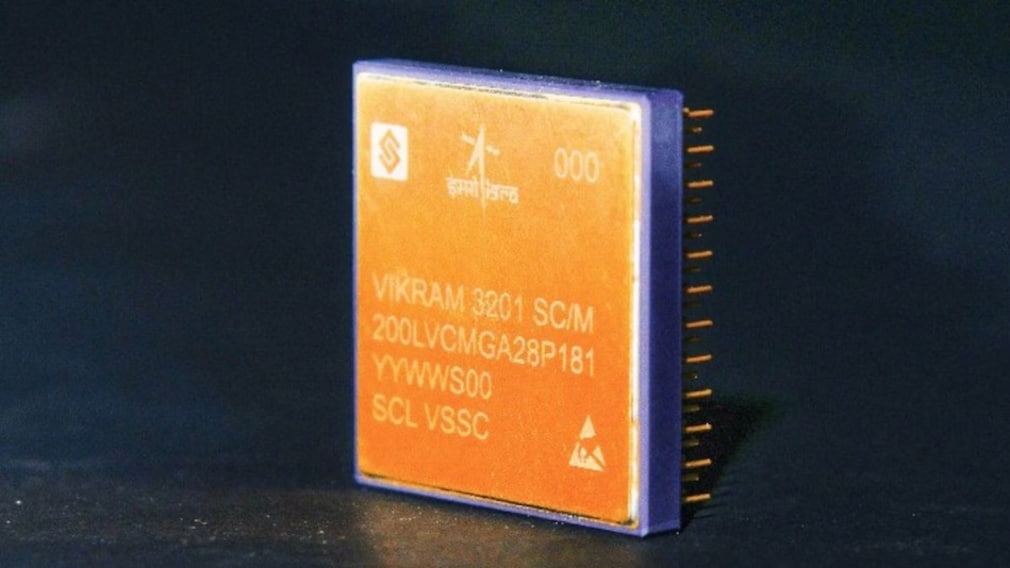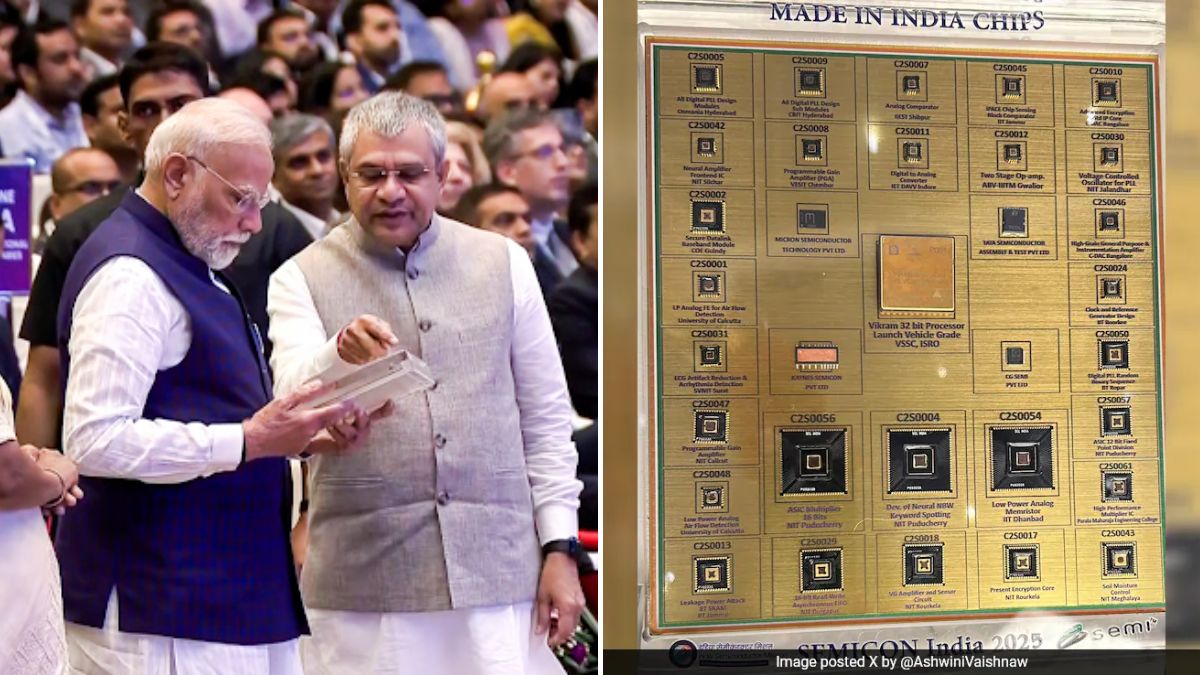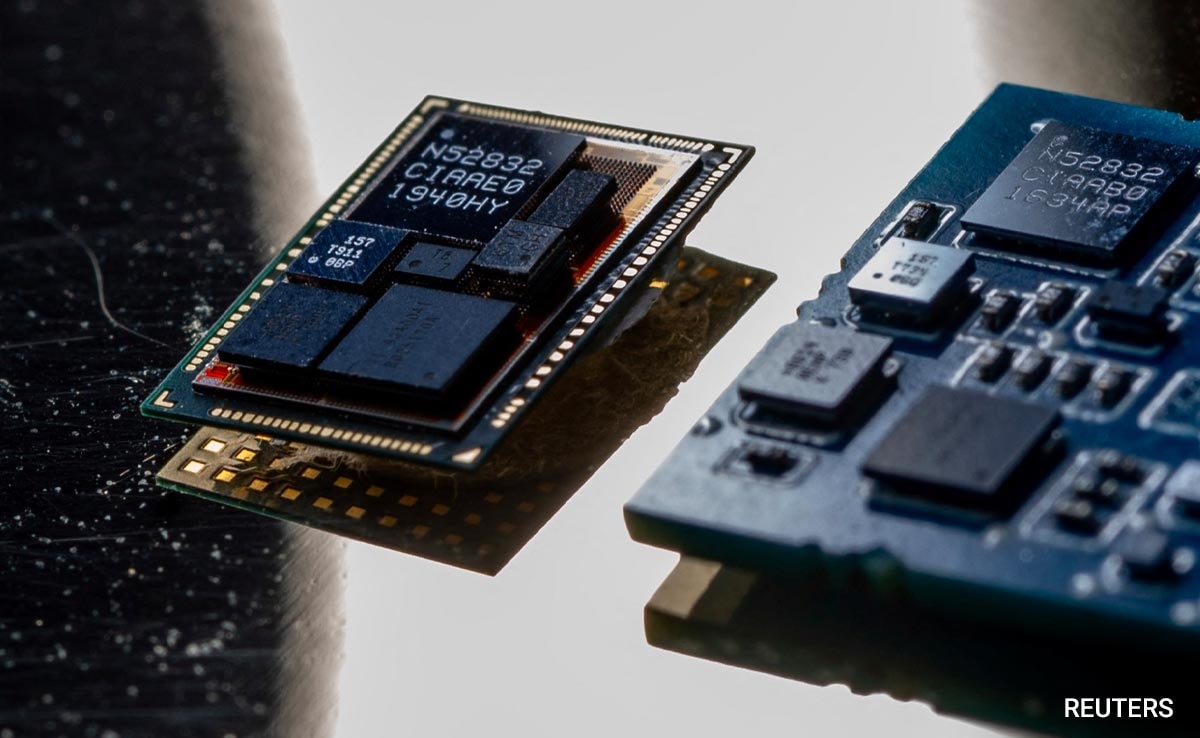'Vikram 3201': 'Aatmanirbhar Bharat's' Deep-Space Microchip, A Game-Changer
Nearly every modern electronic item needs microchips, and India is positioning itself to be a key player in this space, competing against Taiwan, China, South Korea, and the United States.

India on Tuesday unveiled a fully indigenous 32-bit microprocessor - 'Vikram', that has been developed by, and for, the Indian Space Research Organisation - at a semiconductor industry event in Delhi.
At the event Prime Minister Narendra Modi, fresh from China and the Shanghai Cooperation Organisation, called microprocessors 'digital diamonds'. "If the last century was shaped by oil, this is by a small chip," he said, emphasising the importance of these miniature powerhouses of computing.
The Prime Minister was, if anything, underplaying the significance of microprocessors in a world dominated by the digital, a world in which everything - from the watch on your wrist and the car in your garage to the life-saving medical equipment at hospitals - relies on microchips.
Nearly every modern electronic item needs microchips, and India is positioning itself to be a key player in this space, competing against Taiwan, China, South Korea, and the United States.
Pitching for increased global investment in India's nascent semiconductor and microprocessor industry - worth an estimated $50 billion today and projected to cross $100 billion by 2030 - the Prime Minister declared, "The world is ready to build the semiconductor future with India."
Sources told NDTV that explosion has already begun; $18 billion is to be invested across 10 fabrication facilities and, simultaneously, the government is building a 'comprehensive ecosystem' for the design and development, manufacturing, and packaging of microchips.
India's 'Vikram' Microprocessor
India's first fully home-made chip is a 32-bit microprocessor with a custom instruction set architecture.
This means it can handle 32 bits of data at a time and can be programmed - i.e., the instruction set architecture, or ISA - to understand and execute a wide variety of orders.

PM Modi and IT Minister Ashwini Vaishnaw at the 'Vikram 3201' launch event
It also has high-level support for the Ada programming language, which is widely known for its reliability and has applications in satellites, air traffic control systems, and launch vehicles.
That is not unexpected given 'Vikram' was designed by India's space agency for use in harsh conditions. In fact, it can withstand a range of temperatures - from -55 to 125 degrees Celsius.
Properly called 'Vikram 3201', it is an upgrade over the 1601 variant - which can compute only 16 bits of data at a time - that ISRO has been using since 2009.
The 'Make-in-India' Plan
'Vikram' is a big step in the government's 'aatmanirbhar', or 'self-reliant' India, push.
It is critical because it confirms India's capacity to design and manufacture space-grade microprocessors, chips that can withstand extreme temperatures and remain fully functional.
First ‘Made in India' Chips!
— Ashwini Vaishnaw (@AshwiniVaishnaw) September 2, 2025
A moment of pride for any nation. Today, Bharat has achieved it. 🇮🇳
This significant milestone was made possible by our Hon'ble PM @narendramodi Ji's far-sighted vision, strong will and decisive action. pic.twitter.com/ao2YeoAkCv
Being able to make this at home - and Mr Modi made mention of this during his Independence Day speech - will significantly reduce the cost of India's space missions.
READ | "Made-In-India Semiconductor Chip This Year": PM Modi
It will also pave the way for the design and manufacture of chips for civilian use.
That will feed a larger commerical ecosystem of electronics giants, like Apple or Samsung, or others for whom they are a critical component, such as the $240 billion automotive industry that accounts for over five per cent of India's GDP, and the nearly $18 billion appliances and consumer electronics industry.

China, Taiwan, South Korea, and the United States are the world's largest chip makers (File)..
Being able to source high-quality chips locally, rather than importing them from China or Taiwan, will incentivise them to set up production facilities here, rather than building abroad and shipping them in.
This will also keep prices low in a famously price-sensitive market.
Looking Forward
The country's semiconductor industry - the base on which its microcip and microprocessor plans must be built - is growing, rapidly, after several false starts.
Government investment has been substanial - under the India Semiconductor Mission, a nodal agency under the Ministry of Information Tech and Electronics, over $7 billion has already been committed towards building and operationalising fabrication plants across the country.
READ | Semiconductor Market To Explode By 2030, India To Play Key Role
The private sector has stepped up as well.
In July there were reports Tata Electronics had signed a $10 billion electronics and semiconductors deal with German tech giants Robert Bosch GmbH for plants in Assam and Gujarat.
And, in May the government greenlit a $433 million venture between HCL and Foxconn to produce display driver chips for mobile phones, laptops, and other devices in Uttar Pradesh.
Billions more have been committed to fabrication and packaging plants in Andhra Pradesh, Odisha, and Punjab. In the latter, the government has cleared a factory that can make 15.8 crore chips per year.
The investment is sizeable. The idea is simple - reduce purchase of semiconductors and chips from foreign countries to cut down the import bill and strengthen domestic manufacturing.
Local fabrication will also enhance the electronics sector's supply chain resilience, which is especially vital after global disruptions dating back to the pandemic have affected global manufacturing.
And all of this will boost the economy and provide more jobs, over 300,000 direct and indirect employment opportunities by 2026 alone, according to some estimates.
What's more, in terms of the raw materials needed, India is rich in chemicals, minerals, and gases, making it well-suited to support the production requirements of the semiconductor supply chain.
NDTV is now available on WhatsApp channels. Click on the link to get all the latest updates from NDTV on your chat.
-
Opinion | Invoked When Needed, Ignored When Not: How A New US Doctrine Sees India
Under the latest US National Security Strategy, India could become a convenience partner, invoked when useful and ignored when inconvenient. It can't accept that role.
-
Opinion | What The IndiGo Crisis Reveals About The Fragility Of Indian Aviation
The indelible images of passengers sleeping rough on cold terminal floors, captured and broadcast across every channel, will outlast a thousand corporate advertising campaigns by IndiGo. The urgent push for reform can no longer be ignored.
-
Opinion | IndiGo Crisis Is What Happens When Market Power Becomes Market Arrogance
IndiGo now is a de-facto monopoly in India's skies. And what comes with monopolies is conceit and extortion.
-
Opinion | Navigating the Tightrope: Why Putin's Visit Is A Masterclass In India's Foreign Policy
India's engagement with Russia is not without risks. Its decision to host the summit, nonetheless, and continue its trade ties despite overt disapproval from the West, is a clear exercise of strategic autonomy.
-
Opinion | Putin In India: Why A Fuming Europe Must Accept Its Problems Aren't Of India's Making
The initiative of the three European envoys to write an article in an Indian daily maligning Putin and Russia just before the Russian president's visit served no real purpose. It was diplomatically unwarranted.
-
Opinion | The Anti-Putin 'Op-ed': Why Europe Must Stop Lecturing India Like It's 1905
Europe has had it easy for centuries. Today, two non-European powers - the US and Russia - are deciding its fate. What really stings the old continent today is this acute feeling of impotency, a sense of irrelevance.
-
Opinion | India Still Needs Something Like Sanchar Saathi - Just Not Like This
India is experiencing what authorities describe as a "peak menace" of digital fraud. The Supreme Court recently took suo motu cognisance of digital arrest scams after victims collectively lost approximately Rs 3,000 crore.
-
Opinion | Sanchar Saathi Mess: 5 Lessons From The Centre's Spectacular Misfire
It's worrying that nobody in authority had the brains to anticipate the outrage that has dominated the public discourse in the last two days. In a way, the government has brought this blowback upon itself.
-
Opinion | Guns To Rallies, How 'Drug Money' Is Fuelling Khalistani Extremism In Canada
Since 2007, more than 200 gang-related homicides in British Columbia alone have been linked to rival Punjabi-Canadian gangs fighting for control of the lucrative cross-border drug trade
-
Opinion | Scindia's Ghost Is Haunting Congress Again - This Time In Karnataka
As Deputy Chief Minister DK Shivakumar stakes his claim to the top post, the party's high command is walking a tightrope, acutely aware that one misstep could lead to a repeat of the catastrophic loss it suffered in Madhya Pradesh in 2020.
-
News Updates
-
Featured
-
More Links
-
Follow Us On










